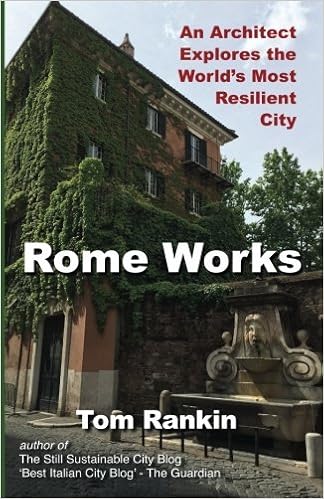19th century public space
Piazza San Silvestro. 2012. The newly renovated square off Via del Corso in the neighborhood of Piazza di Spagna was inaugurated today and I biked over to see it. It was a nice day, not too warm, and the hard stone benches were doing their job, filled with lounging people. The elliptical space which makes up one component of the square (the other is a rectangle, separated by a bumpy paved non-road in between) recalls the Campidoglio, of course, but without Marcus Aurelius. Without any central focus, in fact, until street artists are allowed to move in. People seemed to be watching the absence of cars and little more.
Today there were police enforcing the rules of civic behavior which seemed to mean no art, no sports, and no commerce. I wasn’t exactly reprimanded for my bicycle but kindly told that bikes weren’t allowed in the pedestrian zone, and that the only bike rack in the neighborhood had been removed. In 2012 designing an urban space without considering bicycles must be a crime somewhere, but apparently not in Rome.
There were a lot of proposals submitted for this space–I had done a few sketches myself–and many of them included the elements that one expects of a 21st century public space in a dense metropolis: a fountain, shade, art, transit, bike racks (and better, bike-sharing), green space, a range of seating for a range of users. Piazza San Silvestro rather looks like a picture of a public space, not really intended to work for long, especially not in the summer when the lack of shade will be excruciating. It’s a place that tries not to offend but neither to offer itself as a democratic space.
I suspect it will be just a question of time before the Alfa Romeo’s of the politically entitled move in to idle where the public buses once waited.



Good article Tom, but is it an ellipse or an oval?
That is a long-standing argument too about Piazza S. Pietro. Hersey (Architecture and Geometry in the Age of the Baroque) does not seem to know the difference between the two.
LikeLike
I agree about this space being bland, without focus, water and shade.
There’s no greenery either, but that could be OK if the intent was to follow the traditional stone-surfaced urban piazza style.
The design seems PURPOSELY gauged to be not too people friendly.
Danger! People might start loitering here if the piazza is TOO successful- like they do on the Spanish Steps! Another “bivacco”, a place the vigili urbani would have to patrol to enforce proper civic behavior….
I see it as an opportunity missed in a crucial central city location- a shame, especially after all the critical press about its design and consequential pro-bono redesign by Arch. P. Portoghesi.
LikeLike